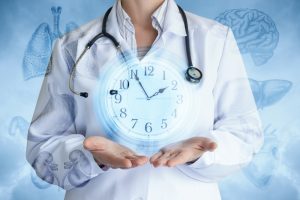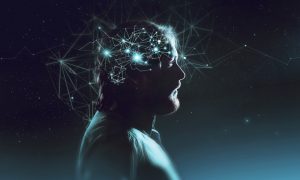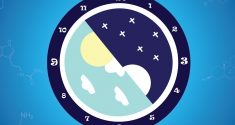New research from a multidisciplinary team is helping to shed light on the mechanisms behind circadian rhythms and offer new hope for dealing with jet lag, insomnia and other sleep disorders. Using innovative cryo-electron microscopy techniques, researchers have identified the structure of the circadian rhythm photosensor and its target in fruit flies (Drosophila melanogaster), one of the key organisms used to study circadian rhythms. The research paper ‘Cryptochrome-Timeless Structure Reveals Circadian Clock Timing Mechanisms’ was published in the journal Nature.
Cryptochrome Involved in Setting the Internal Clock
 The research focused on fruit fly cryptochromes, key components of the circadian clocks of plants and animals, including humans. Cryptochromes are a group of proteins found in even the oldest of all plant species that become active in the dark. These proteins are involved in signaling animals when it is time to migrate. They help plants know when to thrive and are even implicated in the growth of human cancer cells. In flies and other insects, blue-light-activated cryptochromes serve as the primary light sensors for setting circadian rhythms. The target of the cryptochrome photosensor, known as “Timeless” (TIM), is a large, complex protein that could not be imaged before and its interactions with the cryptochrome are therefore not well understood.
The research focused on fruit fly cryptochromes, key components of the circadian clocks of plants and animals, including humans. Cryptochromes are a group of proteins found in even the oldest of all plant species that become active in the dark. These proteins are involved in signaling animals when it is time to migrate. They help plants know when to thrive and are even implicated in the growth of human cancer cells. In flies and other insects, blue-light-activated cryptochromes serve as the primary light sensors for setting circadian rhythms. The target of the cryptochrome photosensor, known as “Timeless” (TIM), is a large, complex protein that could not be imaged before and its interactions with the cryptochrome are therefore not well understood.
Circadian rhythms work through genetic feedback loops. The researchers found that the TIM protein works together with its partner, the period (PER) protein, to inhibit the genes responsible for their own production. With appropriate delays between the events of gene expression and repression, an oscillation in protein levels is established. This oscillation “represents the ticking of the clock and appears to be quite unique to the circadian rhythm. Blue light alters the chemistry and structure of cryptochrome’s flavin cofactor, allowing the protein to bind the TIM protein and inhibiting TIM’s ability to repress gene expression and thereby reset oscillation.
The new methods enabled scientists to obtain detailed images of protein structures and gain valuable insight into their function. This research not only deepens the understanding of how the ciradian rhythm is regulated, but also opens new avenues for the development of therapies that target related processes. An unexpected result of the study sheds light on how DNA damage is repaired in a cell. Cryptochromes are closely related to a family of enzymes involved in repairing DNA damage called photolyases.
Better Understanding of Human Seep Patterns
The study also offers an explanation for the genetic variation in flies, which allows them to adapt to higher latitudes where days are shorter and cooler in winter. Rather, these flies have a specific genetic variant that involves a change in the TIM protein, and it wasn’t clear why this variation might help them. The researchers found that due to the way the cryptochrome binds TIM, the variation reduces TIM’s affinity for the cryptochrome. The interaction between the proteins is then modulated and the light’s ability to reset the oscillation is altered, altering the circadian clock and increasing the fly’s dormancy period, helping it survive the winter.
Some of the interactions the researchers see in the fruit flies can be mapped onto human proteins. According to the experts, the study can help to understand key interactions between components that regulate people’s sleep behavior, such as how the critical delays in the fundamental timing mechanism are built into the system.
Circadian Disorders Impede Neurogenesis
New research at the University of Massachusetts Amherst is focusing on the root cause of adverse health effects from disruptions in the body’s circadian rhythm, which typically occur due to jet lag and rotating work shifts.

Cell birth and survival in the adult hippocampus is regulated by a circadian clock, so disrupting it can disrupt the process of neurogenesis. Their findings support the hypothesis that it is this internal misalignment, this state of desynchrony between and within organs, that occurs during jet lag that is responsible for the adverse effects on neurogenesis — and, they suspect, other adverse health ones Effects of circadian disturbances.
Circadian Misalignment in Jet Lag
To test their hypothesis, the researchers studied cell birth and differentiation in Syrian hamsters with a recessive mutation in the Cry-1 gene, which speeds up the clock under constant conditions and dramatically accelerates their ability to shift in response to light. The researcher namend the mutation, discovered in earlier research, Duper. The research team also tested a control group of hamsters without the Duper mutation. Both went through the same sequence of changes in the light cycle. They simulated jet lag in the form of eight-hour pre-runs and delays in eight 16-day intervals. A cell birth marker was given in the middle of the experiment. The results showed that jet lag has little effect on cell birth but stops cells from becoming neurons. Dupers are immune to this phase shift effect. The results suggest that circadian misalignment is critical in jet lag.
The ultimate goal of the experts is to advance the understanding of the pathways involved in the human biological clock, which could lead to the prevention or treatment of the effects of jet lag, shift work and circadian rhythm disorders.
Now, the team will address a “big unanswered question,” namely, “whether it is the operation of circadian clocks in the hippocampus that is directly regulated by shifts in the light-dark cycle, or whether neurogenesis is controlled by biological clocks that work in cells elsewhere in the body.” Another possibility, which the researchers think is more likely, is that the master pacemaker in the suprachiasmatic nucleus of the hypothalamus in the brain detects the shift in light and then relays it to the stem cell population residing in the hippocampus share and differentiate.







